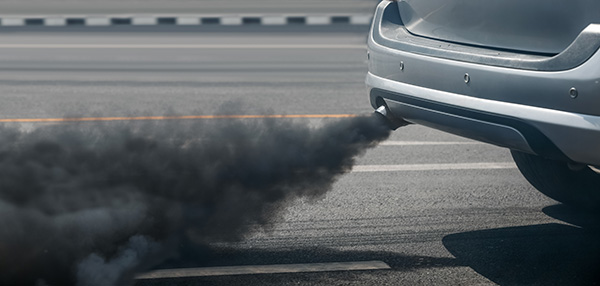
Seeing smoke coming from your exhaust can be unsettling. While a little vapor on a cold morning is normal, constant or heavy smoke is often your car’s way of telling you something’s wrong. The color, thickness, and smell of the smoke can all offer clues about what’s going on under the hood—and some issues are more serious than others.
So how do you know when exhaust smoke is a red flag? And what might be causing it? Let’s break it down.
White Smoke
Thin white smoke that disappears quickly after starting your car—especially on cool mornings—is usually just water vapor. That’s a normal byproduct of condensation in the exhaust system and nothing to worry about.
But if the white smoke is thick, continuous, and doesn’t go away, that’s a different story. It could mean coolant is leaking into the combustion chamber, often due to a blown head gasket or a cracked engine block.
In this case, you might also notice other symptoms like:
- Engine overheating
- Low coolant levels without a visible leak
- Sweet smell coming from the exhaust
Ignoring this kind of white smoke can lead to major engine damage, so it’s worth getting checked out right away.
Blue or Bluish Smoke
If the smoke coming from your exhaust has a blue tint, your engine is likely burning oil. This can happen for several reasons:
- Worn piston rings or valve seals
- Damaged cylinder walls
- Turbocharger issues (in turbo-equipped vehicles)
Oil shouldn’t be entering the combustion chamber. When it does, you’ll not only see blue smoke—you may also smell burning oil and notice a drop in your oil level between changes.
Burning oil is a problem that can get worse over time. If not addressed, it can clog your catalytic converter or foul your spark plugs, reducing performance and fuel economy.
Black Smoke
Black smoke means the engine is burning more fuel than it should, usually due to a rich air-fuel mixture. This could be caused by:
- A malfunctioning fuel injector
- Faulty oxygen sensors
- A dirty air filter
- A stuck fuel pressure regulator
Along with the smoke, you might notice your fuel economy has dropped or that the engine feels sluggish. While black smoke doesn’t always indicate immediate danger, it does mean your engine isn’t running efficiently—and it can cause long-term wear if ignored.
Other Clues
The color of the smoke is important, but it’s not the only thing to pay attention to. If you notice:
- A sweet smell, it could be burning coolant.
- A burning oil smell, combined with smoke, points to an internal leak.
- A rich fuel smell, especially with rough idling, could indicate incomplete combustion.
If any of these are present, along with visible smoke, your car needs a professional inspection. Catching engine problems early can prevent more expensive repairs down the line.
When Is It Time to Worry
Occasional puffs of smoke during cold starts or hard acceleration can be normal, especially in older vehicles. However, continuous smoke, especially with changes in performance or warning lights, is a sign that something more serious may be going on.
If you’re adding oil or coolant more frequently, noticing unusual smells, or seeing smoke that doesn’t go away, it’s time to get your vehicle checked before it leads to more costly damage.
If you’re noticing unusual smoke coming from your exhaust, don’t guess—let the pros at Space Center Automotive of Clear Lake in Houston, TX take a look. We’ll diagnose the issue quickly and recommend the right fix to keep your engine running clean and strong.